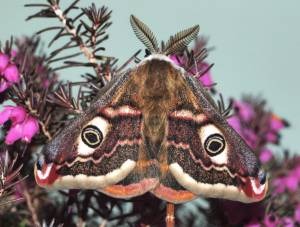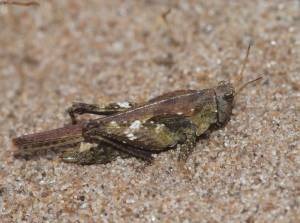Dr Phil Smith’s Wildlife Notes
April 2011
Nationally, April 2011 seems to have been the warmest since records began in 1659, beating the previous record in 2007 by a considerable margin. In our area, rain fell in small quantity on only six days and, by the end of the month, the now customary spring drought was having major impacts on the countryside and wildlife. Pennine moorland was predictably going up in flames, while several large fires were reported in Sand Lizard habitat on the Sefton Coast.
For the second year in a row, the drought badly affected Natterjack Toad breeding, my counts of 89 spawn strings on Birkdale Green Beach being well down on recent years’ totals. Many slacks and scrapes were drying up by the end of the month, bad news for the six new volunteers I had just trained to monitor the fortunes of our iconic amphibian.
On the plus side, lots of butterflies and other insects were on the wing early and seem to have survived the cold winter well. Orange Tips and Speckled Woods were particularly numerous from mid-month, joining plenty of Peacocks, Commas and even the occasional Red Admiral fresh out of hibernation. Dragonflies also emerged earlier than usual – I saw my first Four-spotted Chasers and Blue-tailed Damselflies at Birkdale on 24th, while Peter Gateley photographed a Broad-bodied Chaser at Martin Mere on 30th. The very rare Northern Dune Tiger Beetle also seems set for another bumper year. Following several unprecedented late March sightings, I counted 65 at Birkdale Green Beach on 24th April. Alex and Shelagh Parsons invited me round to photograph male and female Emperor Moths they had bred from eggs laid last year. Our only member of the silk-moth family, this dramatic insect looks like it should inhabit the tropics but is actually fairly common locally.

I expect to see something new and different every time I go out on the sand-dunes but a first record for Sefton is always special. Kneeling down to photograph a dune slack plant at Birkdale on 24th, I disturbed a tiny insect which I took to be a Common Ground-hopper (Tetrix undulata), a relative of the grasshoppers that I have seen a few times before on the dunes. However, on viewing my photos later I realised it was actually the related but much rarer Slender Ground-hopper (Tetrix subulata). This is a mainly southern insect whose nearest mapped localities are about 60km away in North Wales. Over the next few days, I found it in several other dune slacks and scrapes from Hightown in the south to Queen’s Jubilee Nature Trail in the north. Guy Knight of Liverpool Museum tells me that he and colleagues have also found Slender Ground-hopper in various places in South Lancashire over the last year, so it is clearly colonising the region, probably in response to climate change. The settled weather seems to have led to most migrant birds passing though quickly with few notable sightings being reported.

The settled weather seems to have led to most migrant birds passing though quickly with few notable sightings being reported. Surprisingly, flocks of winter Waxwings were still in Liverpool and Bootle in mid-April and I was pleased to find 70 White Wagtails, the continental form of our Pied Wagtail, on Ainsdale beach on 6th. Seaforth Nature Reserve is famous for its spring gatherings of Little Gulls but very few were seen this April. However, my visit on 23rd produced a good variety of terns, including 48 Sandwich, 20 Common, 7 Arctic and a Black Tern. A tour of Ainsdale Sand Dunes National Nature Reserve with friends on 19th, ostensibly to record bushes of the rare hybrid willow Salix x doniana, led to close views of two male Ring Ouzels, the first time I have seen more than one of this spectacular upland relative of the Blackbird. The willows were nice too!
